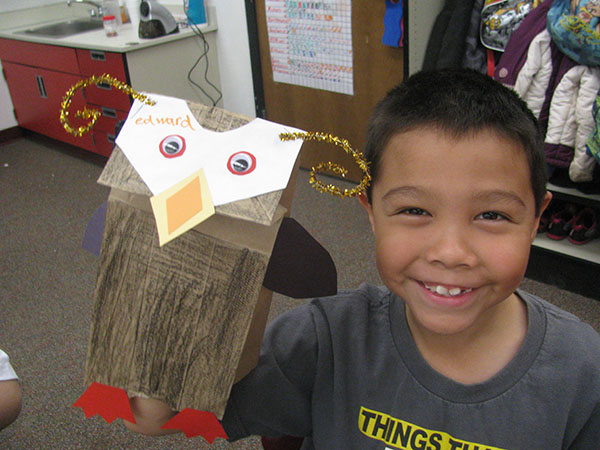Bering Sea Days is an annual program developed by the Aleut Community of St. Paul Island Tribal Government and the school at St. Paul.  The week is devoted to science in the place where the kids live, with students of all ages learning about career routes and research projects from resident and visiting scientists.
The week is devoted to science in the place where the kids live, with students of all ages learning about career routes and research projects from resident and visiting scientists.
I was lucky enough to attend Bering Sea Days this year. What a great week!
There was a full schedule of rotating class and field activities that included learning about the Coriolis effect, digging up an Orca calf (buried on the island for two years), doing a steller sealion diet dissection, learning about tracking the underwater movements of crab, visiting the fur seal rookeries, and tracking a fur seal foraging trip…..
The week ended with a very impressive poster session and a fun community social — complete with singing!
I got to talk about seabirds with everyone from Head Start (3-4 year olds) to high school!
We made puffin bills and read one of my favorite books — “There Once Was A Puffin” (by Florence Page) with the pre-schoolers.
We learned about the crazy life of puffins and made tufted puffin paper bag puppets with the elementary groups.
We learned about prey availability for seabirds during the breeding season with the middle school classes. This included a foraging game in the gym with different foraging scenarios (prey near and far from the colony, large versus small fish, and high versus low density shoals). The class was split into pairs of two species: a puffin and a murre. The puffin parents could carry multiple prey in their bill (a clothes peg) and both parents could forage at the same time (leaving the chick safe in the burrow). In contrast, the murre parents could carry only one prey at a time and parents had to relay (one parent keeping the chick safe on the cliff ledge). The kids made it a super fun game.
The puffin parents managed to deliver many more fish to their chick (a paper cup). We discussed how these results helped explain the different fledging strategies of murres and puffins, with murre chicks being led to sea and fed on the ocean as soon as they are able to jump safely from the cliff (about 2 weeks old).
Puffin parents get tired!
The high schoolers learned about the Alaska Maritime National Wildlife Refuge’s longterm monitoring program, and possible routes to becoming scientists, such as marine ecologists and refuge biologists.
And, kids of all ages braved the wind and headed out on a bird trip with the St. Paul Island Tour group. Most of the seabirds have left the island, but we saw lots of ducks (including a spectacled eider) and had a good view of a slaty-backed gull.
The island was in full fall glory. The fur seal pups were swimming en masse in the coves, and an orca pair was patrolling the beaches looking for dinner. We had some good wind, and learned why birders who visit the island love these storms.
It was a wonderful week. Thank you to everyone who hosted, organized, and participated in it.

